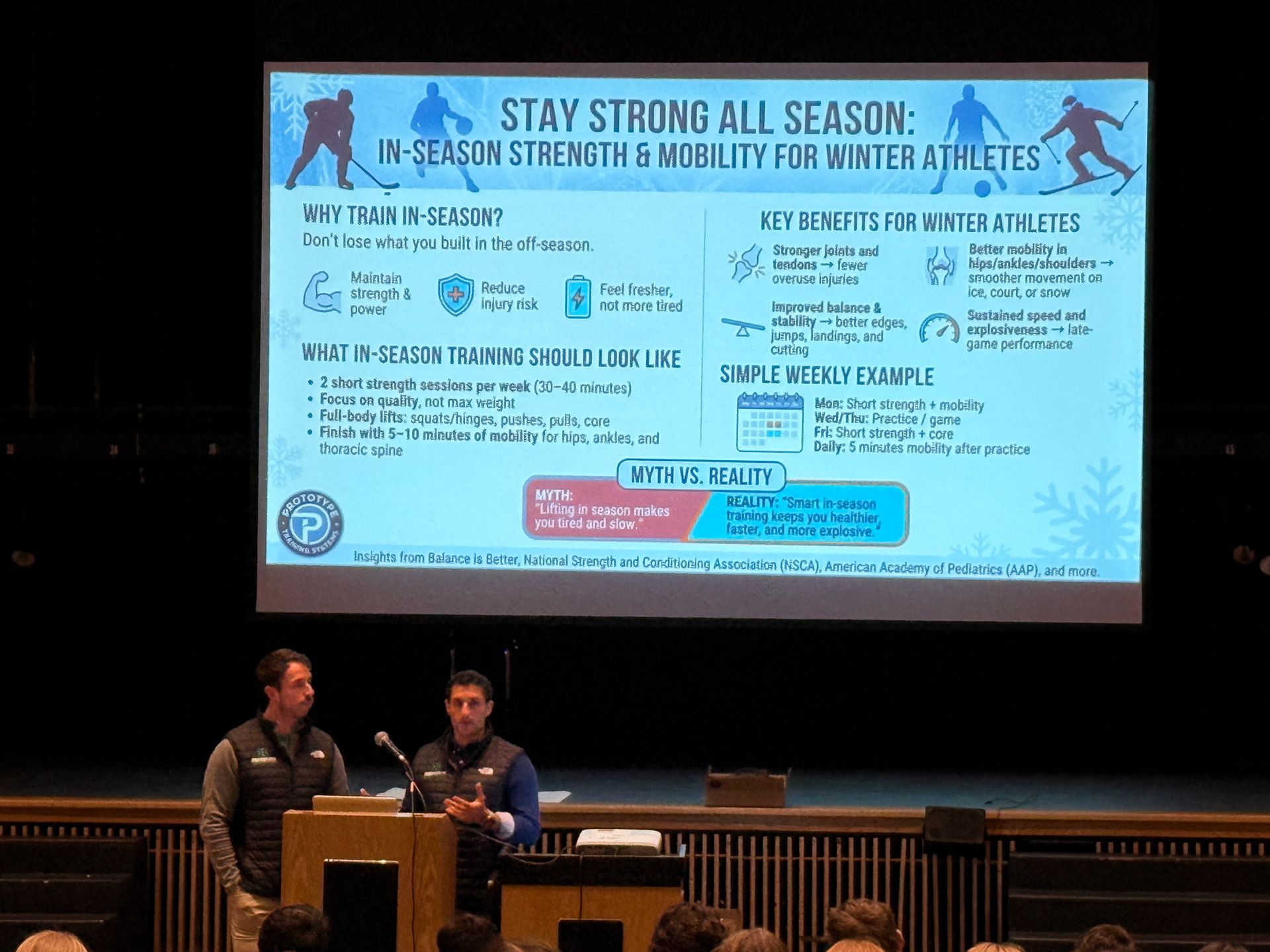Speed Series: Want to run faster? Do this drill!

When it comes to sprinting, learning the proper technique can be a little more difficult than you would think. Sprinting isn’t about just trying to move your legs as fast as you can, there are quite a few moving parts (pun intended)!
If you missed our first blog in the Speed Series titled, How to go Faster, you will want to check that out as well!
Take a look at this picture below. This is what the ideal apex of a stride should look like. The important thing to notice here is that the left hip, knee, and calf are maximally extended, while the right leg and left arm are flexed and driven forward. This is how we propel ourselves forward; half of our body is extending to push us while the other half swings forward to accelerate and maintain momentum.
Now that we have defined what the ideal sprinting technique looks like, one simple method to help achieve this form is by practicing a drill called “A Skips”.
This is a running drill that is essentially high knees except in a skipping form. You hop forward with the leg that is extended while the other leg and same arm drive upward, performed in short strides.
When I went to college to run track, this was one of the drills we did as a part of our warm-ups. My coach kept reiterating how important it was to maintain proper form on this drill, but I didn’t really understand the reason. Why was he so insistent on this one drill?
It may look complicated, but you can break it up into two simple steps.
- First, you hop forward with a single leg while driving the arm on the same side and leg on the opposite upward.
- After that, you just drop the opposite leg down to the ground in a quick but controlled fashion.
- Then, you just repeat on the other side in one rhythmic motion!
It was an awkward movement to learn at first, but I quickly became comfortable with it and began to feel quicker as a result. My warm-ups felt more meaningful and they prepared me to take on workouts convincingly.
Although our coach never really explained why he was such a stickler for this one drill, my exercise science degree took the wheel and opened my eyes to its benefit.
How is this drill going to help you?
It’s no secret that warming up is important to do before workouts. It gets your blood flowing, prepares your muscles for longer and forceful contractions, and more. However, A skips take it a step further. They will train your brain to create a more efficient form by reinforcing knee and arm drive, getting them into the optimal position.
These two actions are undervalued; you could miss out on a lot of distance in every single stride without them. It doesn’t stop there! Because the drill is performed with high intensity, it will train your muscles to move quicker with more power by increasing the number of fast-twitch muscles in your body.
You don’t need to be a competitive runner for this to make a difference in your workouts. If you’re new to running but you want to get in shape, this is a great way to maximize the efficiency of your runs by increasing your work volume while decreasing the effort given.
To summarize, you might be selling yourself short if you don’t implement this drill into your warmups before running. It will help you run more efficiently and increase your speed, whether it be a 100m sprint or a marathon!
The post Speed Series: Want to run faster? Do this drill! appeared first on Prototype Training Systems.
Previous Blogs


Climb to New Heights
Prototype Training Systems is more than a gym - it is a lifestyle. Join us today!


